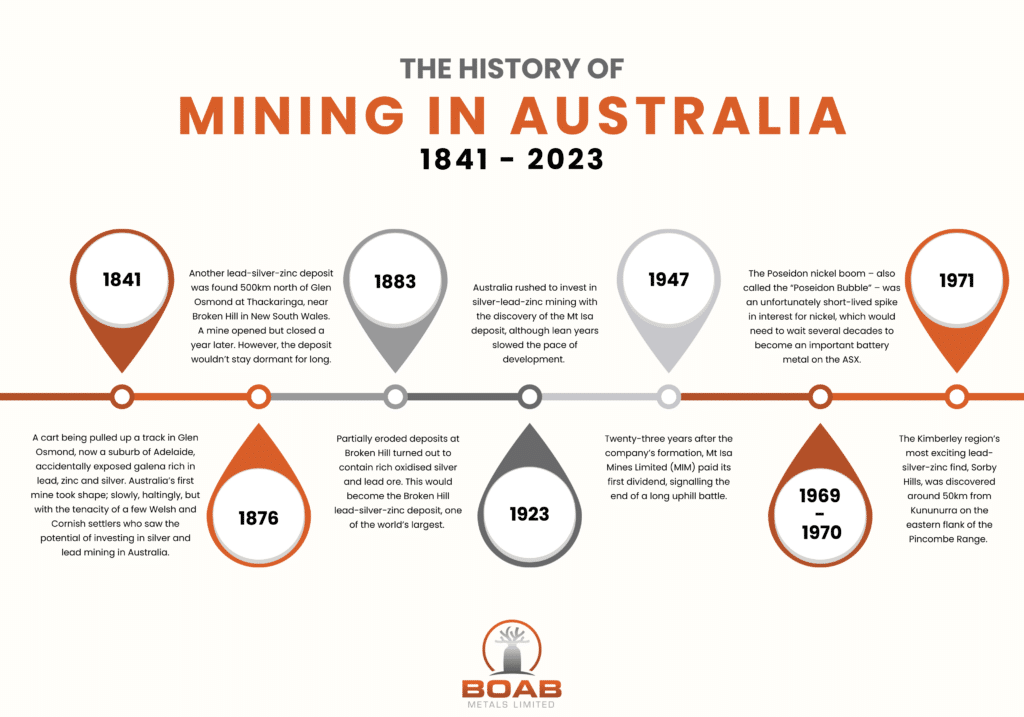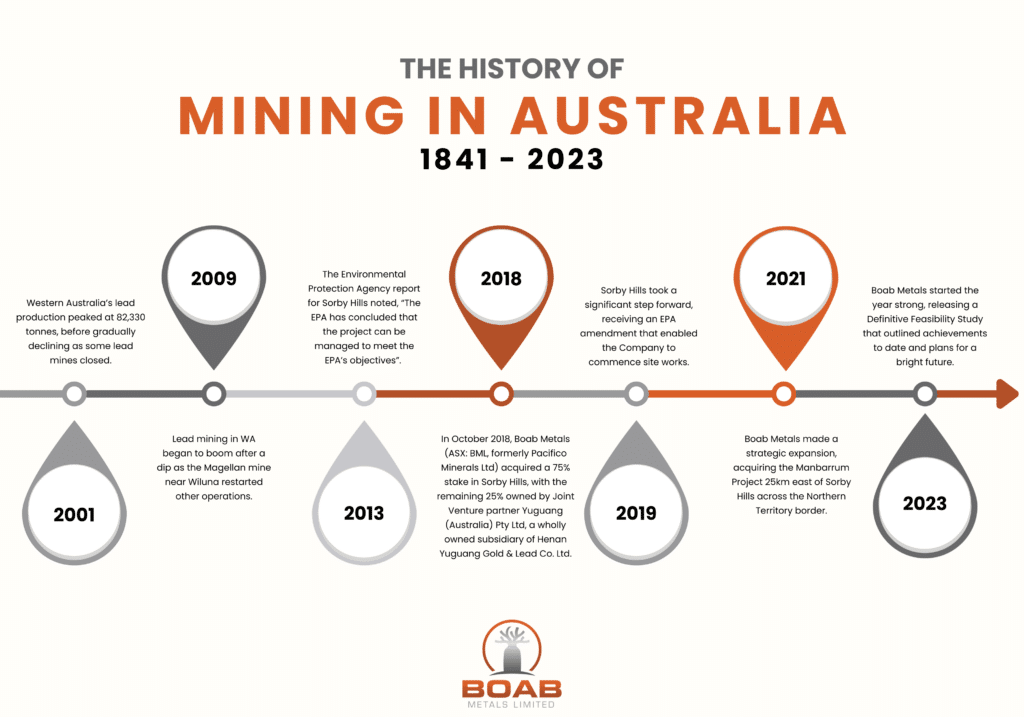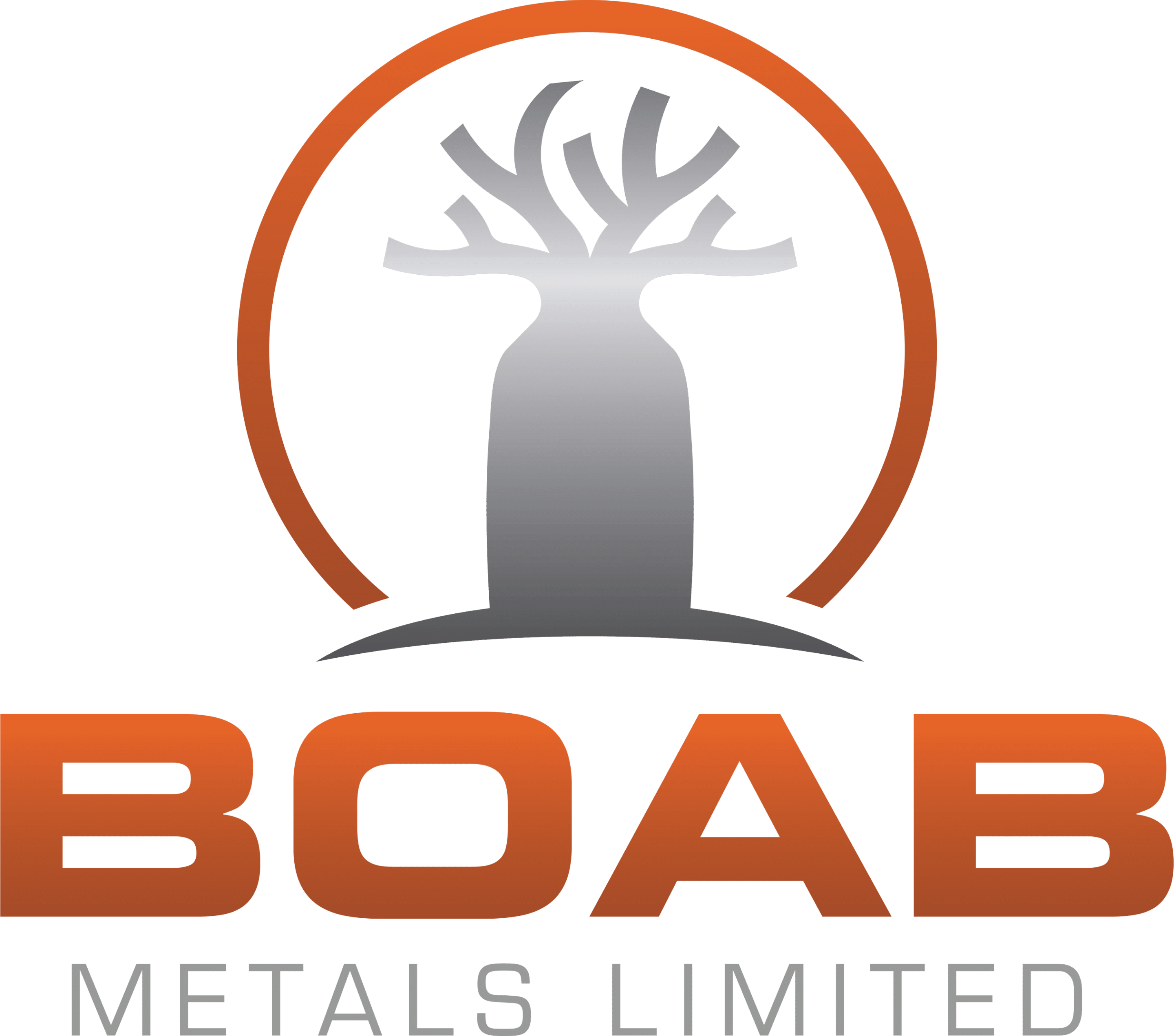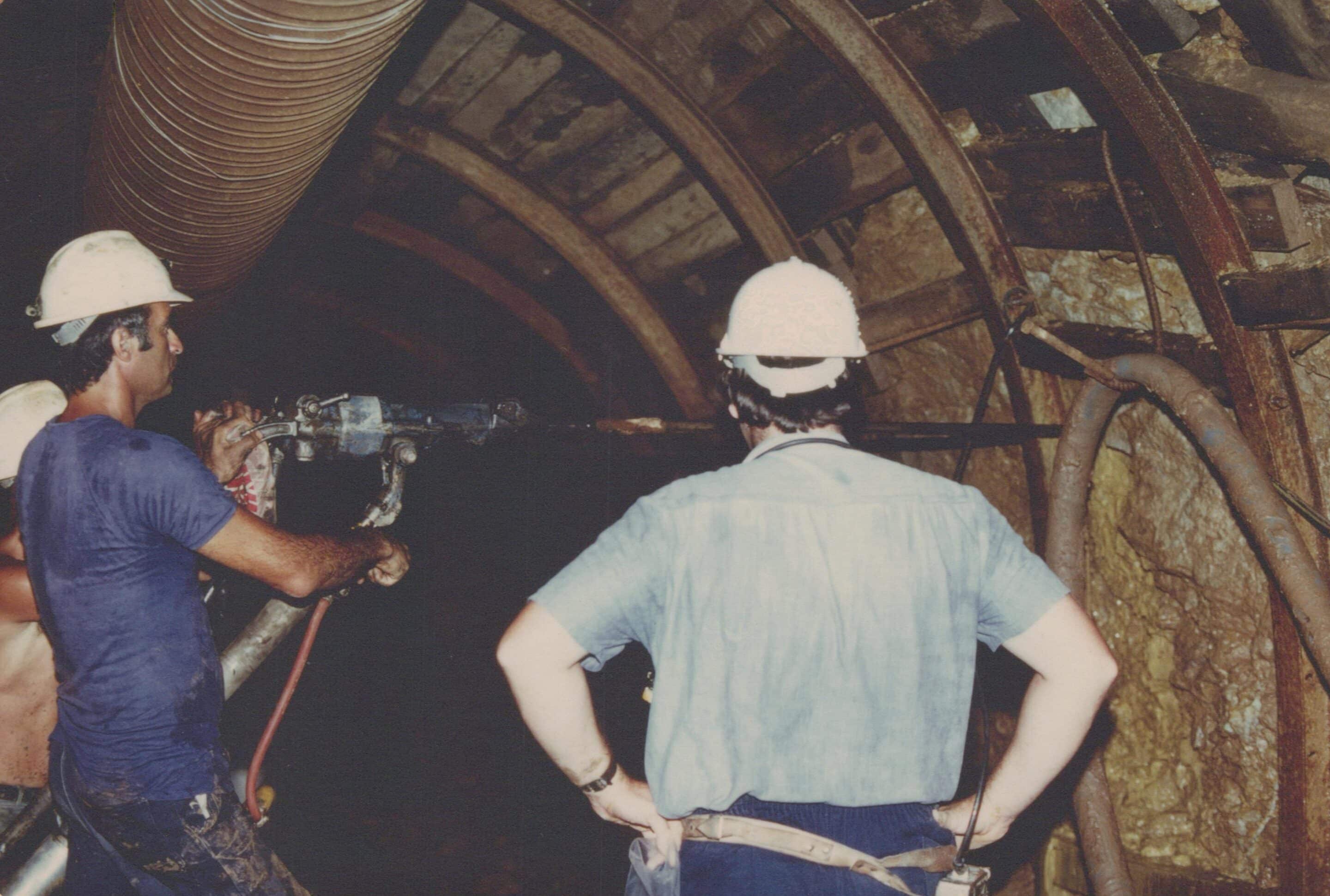From cart wheels to battery metals: 200 years of mining evolution
Mining has always been part of Australia’s identity. Our resource-rich red earth is full of history, a symbol of our good fortune, and vital for our future prosperity. This year marks 200 years since early settlers first found gold in Australia. It is also 50 years since the Sorby Hills deposit was discovered, marking the start of our story. Looking back 200 years, it’s hard to know if the first miners searching the country for their fortune knew what lay ahead. Could they have known that two centuries later, we would be discussing different options for investing in silver and analysing battery minerals on the ASX?
Timeline of mining in Australia
1823
While exploring the Bathurst region of New South Wales, surveyor James McBrien recorded Australia’s first official gold find in February 1823. However, “The gold was sparse and McBrien’s record of his find was forgotten”. The gold rush would wait another 30 years.
1841
A cart being pulled up a track in Glen Osmond, now a suburb of Adelaide, accidentally exposed galena rich in lead, zinc and silver. Australia’s first mine took shape; slowly, haltingly, but with the tenacity of a few Welsh and Cornish settlers who saw the potential of investing in silver and lead mining in Australia.
1850’s
At the height of the gold rush, Australia was producing around 40% of the world’s gold.
1876
Another lead-silver-zinc deposit was found 500km north of Glen Osmond at Thackaringa, near Broken Hill in New South Wales. A mine opened but closed a year later. However, the deposit wouldn’t stay dormant for long.
1883
Partially eroded deposits at Broken Hill turned out to contain rich oxidised silver and lead ore. This would become the Broken Hill lead-silver-zinc deposit, one of the world’s largest.
1893
Paddy Hannan discovered gold near Kalgoorlie, which set off a major gold rush to “The Golden Mile” in Western Australia.
1896
Broken Hill Proprietary Company – better known as BHP – began mining iron ore at Iron Knob, South Australia.
1923
Australia rushed to invest in silver-lead-zinc mining with the discovery of the Mt Isa deposit, although lean years slowed the pace of development.
1947
Twenty-three years after the company’s formation, Mt Isa Mines Limited (MIM) paid its first dividend, signaling the end of a long uphill battle.
1960’s
On the 24th of November, after decades of economic woes and two world wars, the Federal Government partially lifted an iron ore export ban in place since 1938.
1964
Oil was discovered on Barrow Island.
1965
Mount Goldsworthy Mining Associates opens the Goldsworthy, the first iron ore mine in the Pilbara, foreshadowing Western Australia’s rise to resources prominence on the global stage.
1966
The Federal Government confirmed it was rescinding all remaining Commonwealth iron ore embargoes on 17th of May.
1969–1970
The Poseidon nickel boom – also called the “Poseidon Bubble” – was an unfortunately short-lived spike in interest for nickel, which would need to wait several decades to become an important battery metal on the ASX.
1971
The Kimberley region’s most exciting lead-silver-zinc find, Sorby Hills, was discovered around 50km from Kununurra on the eastern flank of the Pincombe Range.
1979
The joint venture partners of the Sorby Hill Project at the time wanted a further understanding of the orebody. It was deemed that an exploration decline would be the optimum method.
1980’s
Western Australia began to see a major resurgence in gold mining, supported by new technologies and the discovery of nickel in the Goldfields region.
1989
The first Western Australian liquefied natural gas (LNG) cargo leaves our shores bound for to Japan.
2001
Western Australia’s lead production peaked at 82,330 tonnes, before gradually declining as some lead mines closed.
2009
Lead mining in WA began to boom after a dip as the Magellan mine near Wiluna restarted other operations.
2013
The Environmental Protection Agency report for Sorby Hills noted, “The EPA has concluded that the project can be managed to meet the EPA’s objectives”.
2018
In October 2018, Boab Metals (ASX: BML, formerly Pacifico Minerals Ltd) acquired a 75% stake in Sorby Hills, with the remaining 25% owned by Joint Venture partner Yuguang (Australia) Pty Ltd, a wholly owned subsidiary of Henan Yuguang Gold & Lead Co. Ltd.
2019
Sorby Hills took a significant step forward, receiving an EPA amendment that enabled the Company to commence site works.
2021
Boab Metals made a strategic expansion, acquiring the Manbarrum Project 25km east of Sorby Hills across the Northern Territory border.
2023
Boab Metals started the year strong, releasing a Definitive Feasibility Study that outlined achievements to date and plans for a bright future. 

What’s next for the resources industry?
From accidental discoveries to strategic acquisitions, Australia’s resources industry has changed significantly in 200 years. And it’s about to change again. Thanks to growing demand for battery storage technology and global shifts towards renewable energy adoption, the current excitement around battery metals on the ASX is expected to sustain at least through the end of the decade. The ‘next big thing’ could be investment in silver thanks to the precious metal’s industrial versatility and unmatched conductivity. Boab Metals (ASX: BML) looks forward to writing our own history, one that will be shared with the Western Australian community and our stakeholders at home and abroad. We’re building on the past to create value for the future. Follow the Boab Metals blog and investor centre announcements to ensure you don’t miss a thing.

